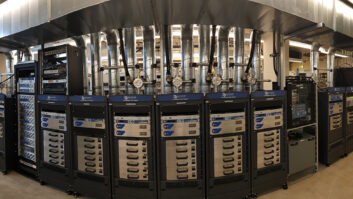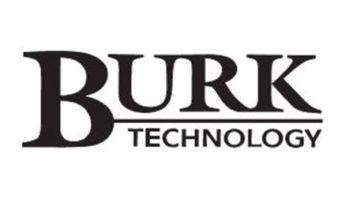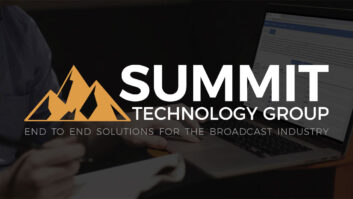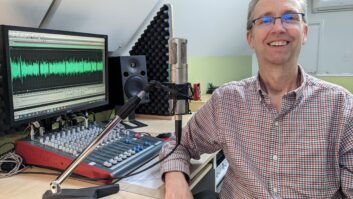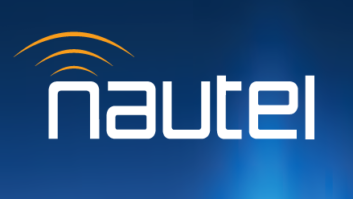When technology fuels creativity
Oct 1, 2006 12:00 PM, By Jim Smith

After years of cutting analog tape with a razor blade, I assembled my first digital audio workstation during the stone age of computer editing in 1991. This was the Turtle Beach 56K system, running on a 386 PC with Windows 3.1. At a total cost of $6,500, it was less expensive than, but quite comparable to, Digidesign’s Sound Tools (the primitive precursor to Pro Tools), which ran on a Mac. Both were 16-bit, hardware-based machines using largely destructive editing and clunky playlists to assemble audio clips. Both stored audio on SCSI drives costing more than $2,000 per gigabyte. Neither was immune to crashes. Neither always worked the way it was supposed to, yet both saw plenty of professional work in the early 1990s.
By 1994, I had exhausted the capabilities of my first DAW, and Turtle Beach, in an increasingly familiar business cycle, was getting out of the workstation business. Casting around for a better system, I chanced upon the Microsound DAW from Micro Technologies Unlimited (MTU). Its 32-bit internal architecture, totally non-destructive operation and free-form editing paradigm all seemed unique in that era, and, to my ears, sonically superior. I made the difficult business decision to spend $12,500 for my first turnkey, hardware-based MTU box.
Fast forward to 2002. I had spent eight years creating radio shows, editing and mastering CDs and putting together soundtracks for long-form TV documentaries and commercials on the Microsound system. Never once had I lost a file or seen the system crash, and it still sounded great. Somewhere along the way, however, support and upgrades, which were initially fabulous, dried up. MTU did not have a large enough customer base or deep enough pockets to keep up with the changes in the pro audio market, and had to turn its attention elsewhere. The features I now needed to work efficiently � plug-ins, multiple file formats, surround support � would never be part of this otherwise flawless system, and it was becoming useless without them.
The challenge of finding a new editing and production environment was daunting, especially because I had not dealt with a serious software learning curve in eight years. Luckily, the world of computer digital audio had been busy while I was away, and, after several months of research, I settled on a pair of native software packages (Steinberg’s Nuendo and Wavelab) that more than met my needs. What I learned during that process and during the following four years should be useful and heartening if you are interested in taking the plunge.
The state of the DAW
Support and longevity are key issues. The “faster, better, cheaper” pressure that has driven so many digital audio products into oblivion is still at work, but the marketplace has served to stabilize many of the more venerable players. Part of this process has been the absorption of successful software developers by large, well-established companies. Among others, Sony has taken in Sonic Foundry, Adobe bought Cool Edit Pro, Yamaha purchased Steinberg, Avid merged with Digidesign and Apple purchased Logic. Virtually every other company left standing now seems solid. The result is a strong field of software developers that are in direct competition with each other for price, power, features and support.
Better support, however, still requires cost efficiency in this competitive atmosphere, and does not necessarily imply personal contact. Good manuals, well organized FAQ, forums and e-mail interactions will be your primary resources, because talking to a human on the phone, with a few exceptions, will probably require a credit card. Like everything else now, support is driven almost entirely by the economy of using the Internet.
With this system in place, you may find yourself downloading software, drivers and upgrades frequently, and you will have to deal with any associated security issues. These concerns lead many pros to keep their workstations offline permanently, and use separate business computers for downloads and Web communications. If you must use your DAW computer for your Internet connection, realize that your audio software may not run properly when the anti-virus software is activated.
When technology fuels creativity
Oct 1, 2006 12:00 PM, By Jim Smith
Native software
There are only a few hardware-based DAWs still active in the marketplace, most recognizably Pro Tools TDM or HD, Sadie and Sonic Solutions. These machines are generally stable, well-supported and quite expensive by modern standards. They are expensive enough that anyone considering buying one will have already done extensive research.
Hardware-based systems have historically had some natural advantages, especially with latency issues, but when I purchased my two software packages, I “went native” because I no longer felt that the (small) business model supported spending the big bucks on a hardware-based system. This outlook is widespread and has driven native development, even resulting in native versions of traditionally hardware-based systems (e.g.- Pro Tools LE and M-Powered). With the help of rapid increases in computing power, native software has matured to the point where a properly integrated system can rival all the power of a hardware-based system.
Properly, of course, is the key word. Turnkey native systems where the vendor has done all the homework for you are available for fairly reasonable integration fees, but those who choose to save money by installing native software in an existing computer need to be careful about system setup. The rules for proper setup of a native digital audio computer are usually available via the software company’s website. Here are some of the basic requirements that are more or less standard for PCs and Macs:
- Lots of RAM, the more the better
- At least one extra audio-only hard drive running at 7,200rpm or faster
- Verified compatibility with the operating system and motherboard
- Installation of all the latest drivers and most current software
- Verified compatibility with the I/O hardware
And speaking of PCs and Macs, despite the raging opinion wars on Internet forums, there is no evidence that either is better for audio or is less likely to crash or suffer integration problems with native operation. Additionally, software is increasingly being written that runs equally well on both systems with nearly identical features, and the two platforms are pushing toward compatibility. Choosing one platform over the other is simply a matter of personal preference or the suitability of a particular software package.
Latency and I/O
Programs that simulate outboard effects units and esoteric, vintage processors (EQ, reverb, mastering compression) have become a significant part of the creative process. Plug-ins are included in the DAW software and available as third party purchases. Some of these third party “plugs” are developed with the cooperation of the manufacturers of the expensive analog or digital equipment that they emulate (SSL, UA, Sony), and are regarded as being highly accurate.
One wrinkle accompanying the explosive growth in plug-ins is the continuation of several flavors of the software interface that allows the computer to stream audio (including plug-ins) in real time. These protocols are not necessarily directly compatible with one another, but can coexist within the same software or on the same computer.
Plug-ins
- Direct X
This is the Windows-only internal interface that resides in the operating system. Although it has been considered sluggish by some in the past, this has not stopped some of the truly powerful plug-in packages from running well in this environment. - Audio Core/Audio Units
This is the Mac-only internal OS interface. Programs for Macs will often include free plug-in bundles that run in Audio Core. - VST
Virtual Studio Technology was developed by Steinberg as an open, cross-platform audio interface, and has become more or less universally accepted for non-Digidesign programs. - RTAS
Real Time Audio Suite is the proprietary format for plug-ins running in Digidesign’s Pro Tools. There are inexpensive third-party programs that allow plugs written for the other protocols to run in Pro Tools as if they were written for RTAS.
When technology fuels creativity
Oct 1, 2006 12:00 PM, By Jim Smith
What can this stuff actually do?
Heavy use of plug-ins of any flavor in real time can tax the host computer and slow things down dramatically. This has spawned the production of processing cards and outboard hardware, like the Mackie UAD-1, TC Powercore or Waves APA32, that carry the load of plug-in processing and provide relief to the computer’s CPU. Most programs will also allow plug-ins to be frozen in place by pre-rendering the effect, thus eliminating the need for real-time CPU horsepower.
Unlike the near-instantaneous travel of sound through analog circuits, digital audio is delayed while its bits are being crunched by computer processing. For practical purposes, the only time this latency tends to be a problem in a modern native DAW is during overdubbing, for example, when you try to record new material in sync with earlier material that you monitor while recording. The buffering and processing required for accurate playback, while not a problem during mixing and editing, can add enough delay to be disconcerting while adding new parts in real time. The latency can be reduced to low times by using fast computers and well-written software, but the major factor in latency control for multitrack monitoring has become I/O hardware.
Pro Tools, proprietary as always, will only work with specific Pro Tools-approved I/O, though some of its hardware can be used with other programs. Virtually every other piece of software out there can work with a variety of third-party boxes or cards. While the software may function adequately with onboard soundcards for basic editing and production, better fidelity and greatly enhanced multitrack performance will accompany the use of one of the large number of boxes or cards that are made specifically to handle audio for DAW software. These devices generally add monitoring and mixing software along with multiple digital or analog inputs and outputs. They can communicate with the computer and software via the internal protocols in the Mac or PC OS, or may, as long as the software is compliant, work with another Steinberg-developed open, cross-platform protocol called ASIO. ASIO can enhance the communication between your software and I/O hardware, and some hardware and software manufacturers are now advertising “near zero latency monitoring” using ASIO. In any case, your best latency settings are generally achieved by working with the protocol available to you and manipulating the software that comes with the I/O hardware.
Which program is right for you?
Although most of my production, and probably most of yours, is performed in stereo, there are only a handful of stereo-only native programs left; notably Sound Forge, Bias Peak and Wavelab (which now also offers surround). I found during my original search, however, that a multitrack program like Nuendo (or Samplitude, Logic, Adobe Audition, Pro Tools, Cubase, Vegas, Sonar or any of the others) could be equally fluid and powerful in a stereo-only project. The tracks can simply be used as handy organizational tools in a non-destructive mixing, editing and processing mode.
Virtually all of the multitrack programs allow you to create, delete and shuffle tracks in any quantity at will, while importing audio to them and moving that audio freely to mock up your production in an obvious and intuitive way. Processing and editing can be applied to tracks or clips and auditioned with little or no rendering time � and can be undone just as quickly. Files can usually be accessed directly (and destructively, if so desired) in a separate, traditional editing window, and the whole project can be mixed down to the file format of your choice when you have everything sounding the way you want. Many (but not all) of the programs offer direct mastering and burning of audio CDs from their multitrack windows.
That is the trend: the all-in-one program. The list of features found in a single program can include full video and SMPTE support, MIDI instrument playback, CD mastering, forensic analysis tools, full multitrack studio emulation, surround mastering, DVD-A mastering, high quality file conversion, looping of royalty-free music�and on and on. The depth and power available can be mind-boggling.
I have not attempted to give you anything like a complete list or comprehensive review of the various audio programs. I can say, however, that everything in the marketplace offers high-resolution, high-quality audio performance capable of fully professional output. The differences between the DAW systems, which are rapidly dwindling, are not so much in quality, but in the specific features offered; the emphasis placed on various features and the organization of the editing and production interface. In my situation, I chose Nuendo because of its robust support for video and associated EDL and file formats. I chose Wavelab because of its CD mastering tools (Nuendo has no audio CD burning) and simpler, more familiar editing interface. Colleagues who work on similar projects decided on Logic, Samplitude, Pro Tools, Sequoia, Sonar, Cubase and Adobe Audition. An interesting fact about this group of programs is that it ranges in price from a few hundred dollars to more than $2,000, sans computer or I/O (except for Pro Tools). They are all different, yet there is not a real loser in the bunch.
It is a big field to choose from, but the research tools are there. Demo versions of DAW software, often fully functional for a limited amount of time, can be downloaded for a serious test drive. Manuals are often available on the same websites in PDF format, as well as user forums that can be browsed by non-owners. Reviews of almost every product can be found online. As you peruse this material, understand that powerful programs often contain many ways to organize or present the work, and that these alternate approaches are not necessarily obvious at first glance. With a little patience, you should be able to stumble across the menus and windows that provide access to the features and workflow that will best serve your situation, sensibilities and wallet.
Resource Guide
Manufacturers of digital audio workstations
Acoustica
559-692-2224
www.acoustica.com
Adobe Systems
800-833-6687
www.adobe.com
ADS Technologies
800-888-5244
www.adstech.com
Audion Laboratories
206-842-5202
www.audionlabs.com
Avid Technology
800-949-AVID
www.avid.com
Bias
800-775-2427
www.bias-inc.com
Dalet
212-825-3322
www.dalet.com
Digidesign
800-333-2137
www.digidesign.com
Digigram
703-875-9100
www.digigram.com
Digital Audio Research
1707 665000
www.dar.uk.com
Digital Juke Box
740-282-SOFT
www.digitaljukebox.com
Docsoft
405-236-2466
www.docsoft.com
E-mu Systems
831-438-1921
www.emu.com
Edirol
360-594-4273
www.edirol.com
Merging Technologies
858-675-9703
www.merging.com
Micro Technology Unlimited
919-870-0344
www.mtu.com
Netia Digital Audio
866-638-4222
www.netia.net
Otari
800-877-0577
www.otari.com
Roland
800-542-2307
www.rolandus.com
Sadie
615-327-1140
www.sadie.com
SAW Studio
www.sawstudio.com
Sonic Solutions
800-225-1656
www.sonic.com
Sony
800-577-6642
www.soundforge.com
Steinberg
818-998-4033
www.steinberg.net
Sydec Audio Engineering
954-572-6391
www.sydec.be
Tascam
323-726-0303
www.tascam.com
Waveframe
510-654-8300
www.waveframe.com
Smith is the owner/operator of Muddy Hole Studios in Martinsburg, West Virginia.






